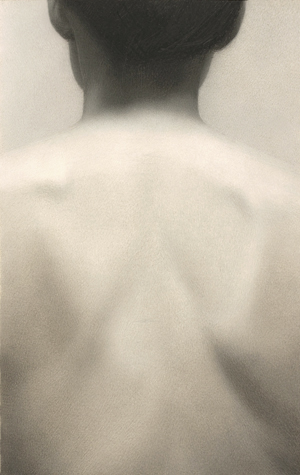We can depict what we see most effectively by simplifying our observations.
Simplifying values produces a much more cohesive, believable drawing than recording every value and minute detail that you see. Artists realized this hundred of years ago and created a system of simplifying and organizing values called...
The Value Scale
Artists use a system of nine (or more) values ranging from white to black, called a value scale. The scale consists of four light values (values 1 to 4”), a middle value (also called a half-tone), and four dark values (values 6 to 9”). A value scale is essentially a simplified gradation.



Further Link:
https://www.thedrawingsource.com/value-drawing.html
There is a difference between how we see values in our experience and how an artist or designer may wish to depict those values. The lightest object in our world humans experience might be the sun -- way too bright to directly at. On the opposite contrast to that would be complete lack of light, the interior of a cave, perhaps. Such extremes are much farther apart than the range of values available to an artist or designer. Sometimes an image may have numerous values within it, expressing a full range, others may show one tonal range or another. For instance, the overall tonality of the drawing is on the light end of the scale, known as high-keyed. Conversely, another drawing may take its value from the dark end of the scale, which is called low-keyed.
Prelimenary drawings in sketchbook:
1. Understand the multiple view points of your selected object.
2. Draw your object using contour edges only, while considering atmospheric perspective.
3. Draw your selected hand held object, considering mapping the planar analysis of it, beaking it down into simple volumes/masses.
4. In 6 thumbnail rectangles in your sketchbook, compose your conceptualy created drawing simply.
Consider exaggerated shifts in scale.
And, obviously, consider a dynamic composition!
18" x 24" drawing paper / pencil
1. Understand the multiple view points of your selected object.
2. Draw your object using contour edges only, while considering atmospheric perspective.
3. Draw your selected hand held object, considering mapping the planar analysis of it, beaking it down into simple volumes/masses.
4. In 6 thumbnail rectangles in your sketchbook, compose your conceptualy created drawing simply.
Consider exaggerated shifts in scale.
And, obviously, consider a dynamic composition!
18" x 24" drawing paper / pencil
i. Create a fictional still life drawing that contains diversity in value range of the same object composed horizontally across the pictorial space. This is to be completed in graphite.
ii. Add one object by mapping it, placing a pencil dot of the top of the form and at the bottom of the form.
iv. Complete the representation of this object created by linear means. Remember the overall color of your object and the drawing inspired by it is to represent an optical value drawing!
v. Place a second object in the middle ground, thus this object will be smaller than your first as well as less in focus to the first. You are certainly able to re-evaluate your thumbnail compositions in your sketchbooks!
vi. Place a third object in the background space paying close attention to the development of atmospheric perspective of each object.
vii. Complete both subject matter items via contour edges and filling in with a planar analysis.
viii. Consider the use of atmospheric perspective to illustrate the 'distance' between the three objects. Thus, things further from your eyesight might appear out of focus, closer in value range and 'cooler.' Recall the imaginative story of the trip you will take to the Blue Ridge Mountains. At a distance, the mountain range appears in blue /violet/grey. They are also out of focus. Upon driving closer to the mountain range, they come into sharper focus and enter into full chroma. The distance between the range and the driver is a perfect example of atmospheric perspective at play. This is also an excellent example of how a spatial field moves from optical (imaginative/fictitious) color to local color (actual color).
R.B. Kitaj
(1932 - 2007)
American lived majority of his life in the UK
British Pop / expressionist

Will(iam) Barnet American (1911 - 2012)
Figurative / expressionist / his works span a variety of influences and thus, styles.



















